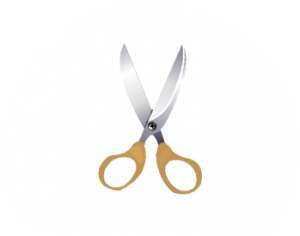

Rogaine was the brand name of the first Minoxidil product to be FDA-approved for hair-loss prevention and made widely available.
Minoxidil has been in use for decades because it’s proven to be the most effective DHT blocker on the market. This topical solution is applied to the scalp to prevent DHT from damaging hair follicles. As long as your hair loss is being caused by male pattern baldness, Minoxidil can keep more hairs in the growth stage longer and improve the quality of each hair shaft.
Minoxidil is among the only hair-loss prevention methods that’s both FDA approved and proven to work for a percentage of men genetically predisposed to balding. This topical solution slows down male pattern baldness without the harmful side effects that come with other medical options like Propecia. One of the perks of using a DHT blocker like Minoxidil is that you don’t have to choose one solution. It can be used at the same time as hair additions or a comprehensive hair loss prevention plan.
It’s vitally important to assess whether Minoxidil will work for you, as it has been proven to work but does not work for everyone. It’s an option that should be considered by any man whose hair loss is caused by male pattern baldness. In order for it to work, however, you must have a certain amount of still-growing natural hair on your scalp. Minoxidil does not work for men whose baldness has already progressed to the advanced stages. By understanding how Minoxidil works, you can see why this solution works so well for young men and those whose hair is just starting to thin, regardless of their age. The more naturally growing hair you still have, the better your potential to see impressive results with Minoxidil. Clients should carefully consider whether to use a DHT blocker because, even if they see great results, it must be used continuously to keep preventing DHT from being produced.
The hormone that causes the damage to hair follicles that eventually results in hair loss is called DHT. Dihydrotestosterone is the byproduct of a reaction that occurs naturally between a scalp enzyme and the male hormone testosterone. DHT interferes with hair growth by shortening the growth cycle of each hair shaft. It prevents delivery of nutrients to the hair follicles and causes individual hairs to miniaturize and take on a “peach fuzz” appearance. Minoxidil inhibits the production of DHT, improves blood flow to the scalp, and prevents DHT from damaging hair follicles. When it works best, the results include slowed hair loss and new hair growth.